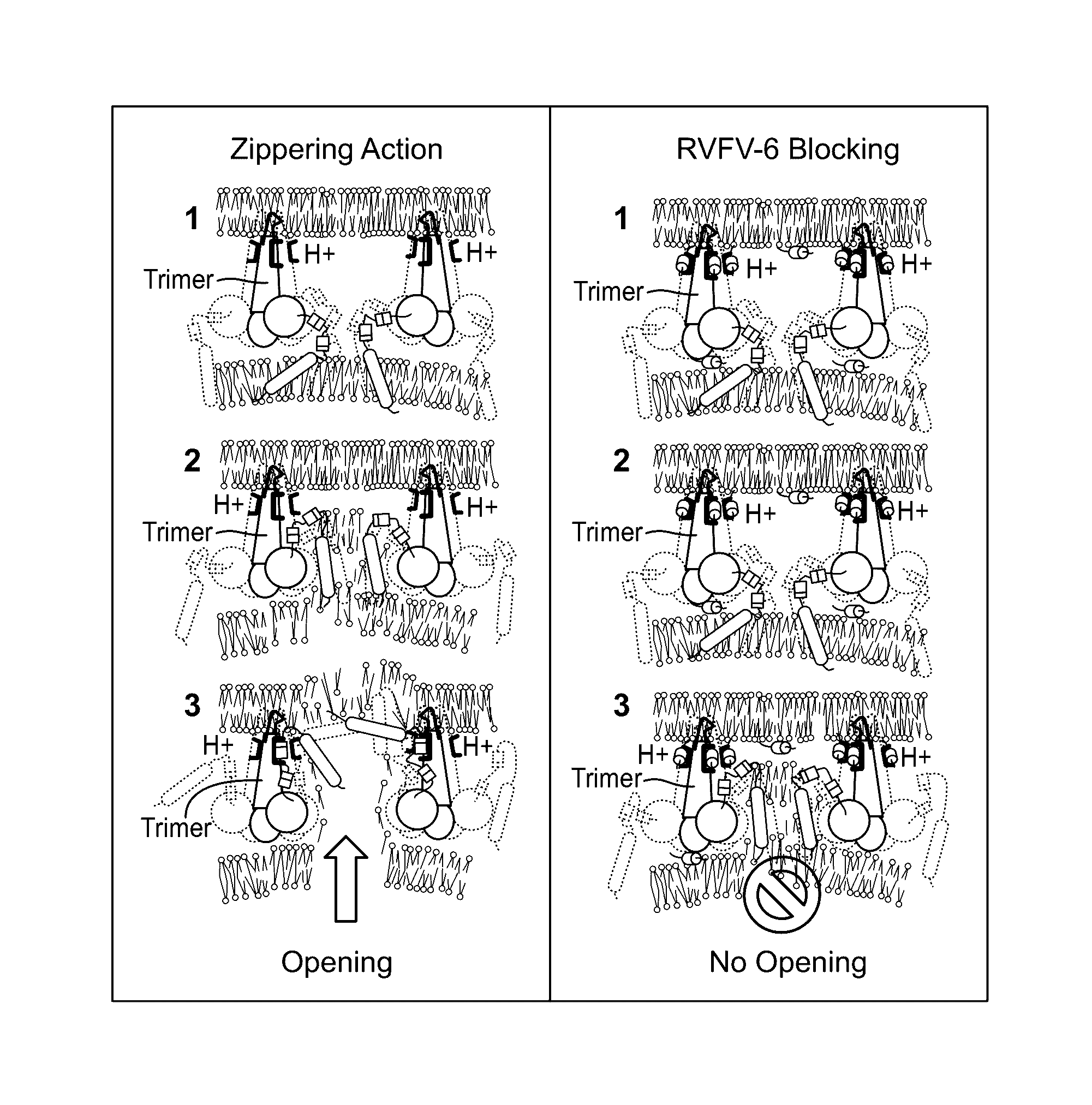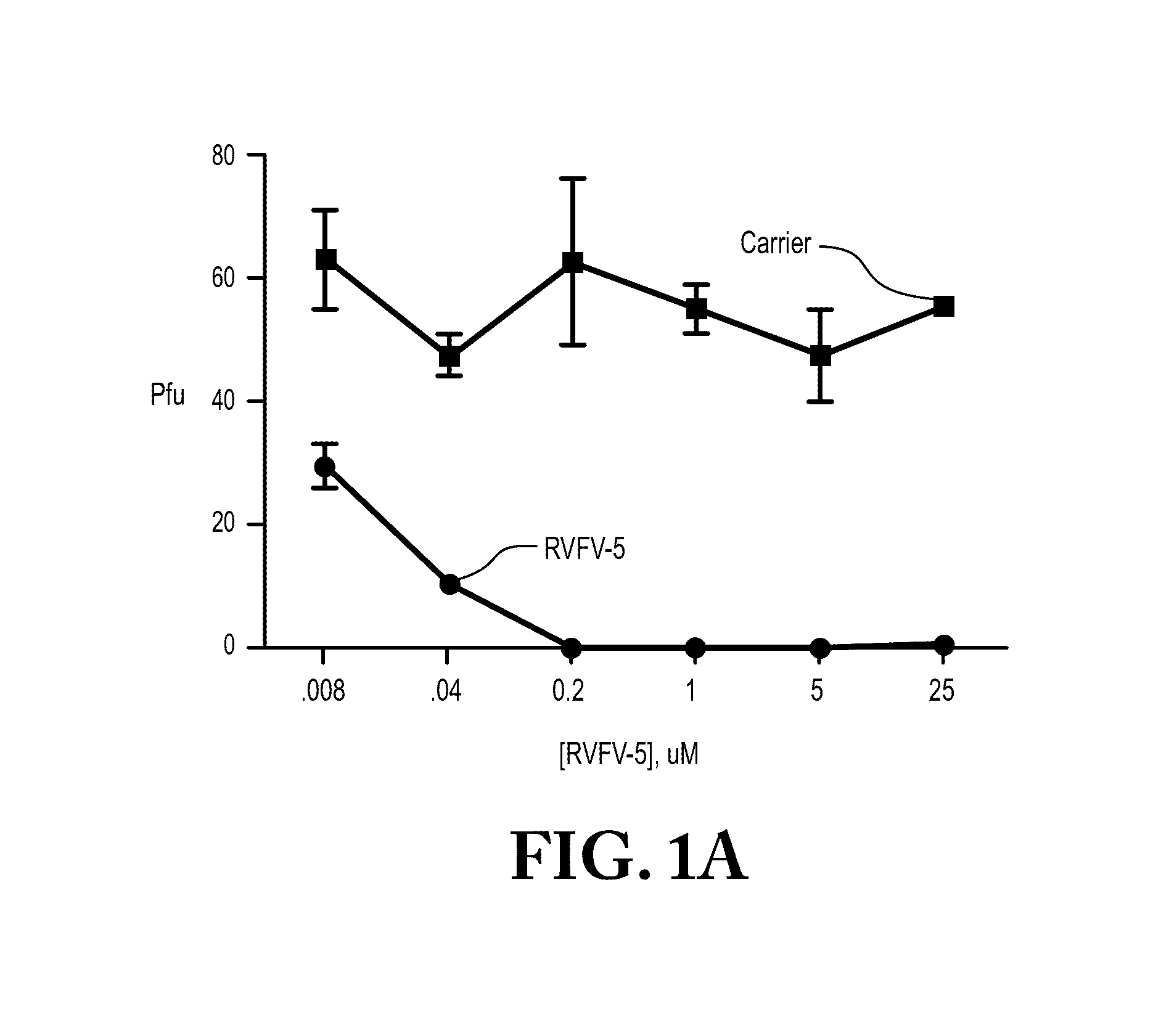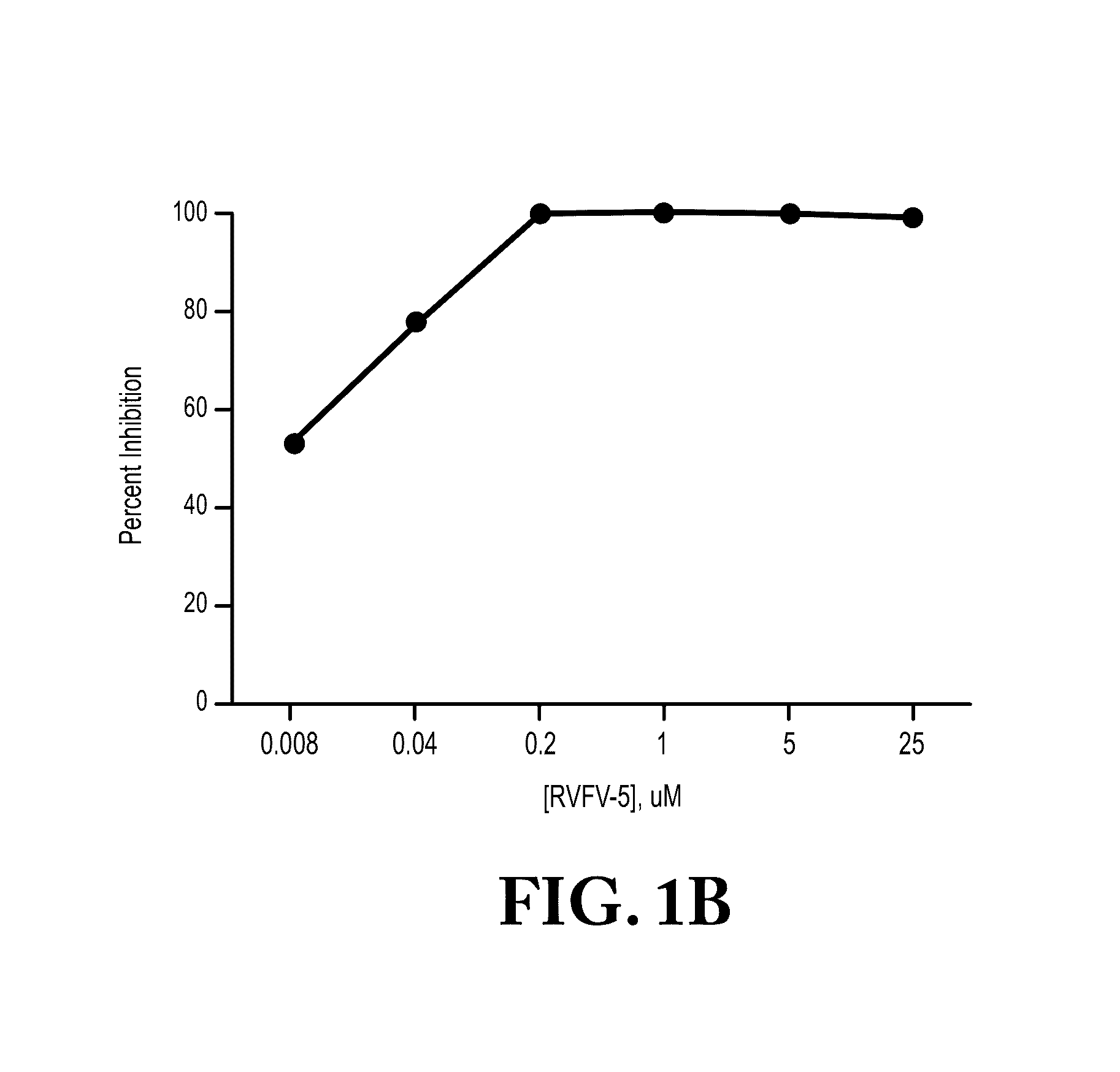Antiviral rift valley fever virus peptides and methods of use
a technology of rift valley fever and peptides, which is applied in the field of antiviral peptides, can solve the problems of significant morbidity and mortality, no fda-approved vaccines or therapeutics, and significant disease burden of rvfv, and achieve the effect of preventing the true productive infection of the virion
- Summary
- Abstract
- Description
- Claims
- Application Information
AI Technical Summary
Benefits of technology
Problems solved by technology
Method used
Image
Examples
examples
Materials and Methods
[0119]Identification and Synthesis of Potential Inhibitory Peptides.
[0120]RVFV fusion protein Gc amino acid sequence (GenBank P03518) was analyzed for a positive Wimley-White interfacial hydrophobicity score (WWIHS), as previously described (Hrobowski et al., 2005; Sainz et al., 2006) using the program Membrane Protein eXplorer (Snider, 2009). Peptides were generated based on a positive WWIHS and protein domain consideration, and regions selected for peptide generation include Gc domains IIa, IIb, III, and the stem region (Table 1). Control, scrambled peptides (designated with a-sc) were generated by randomly assigning amino acid positions for each amino acid in the experimental peptide. Peptides were synthesized by a solid-phase conventional N-a-9-flurenylmethyloxcarbonyl chemistry and purified by reverse-phase high performance liquid chromatography to greater than 95% (Bio-synthesis, Inc., Lewisville, Tex.). Lyophilized peptides were initially resuspended in 1...
PUM
| Property | Measurement | Unit |
|---|---|---|
| pH | aaaaa | aaaaa |
| thickness | aaaaa | aaaaa |
| solution | aaaaa | aaaaa |
Abstract
Description
Claims
Application Information
 Login to View More
Login to View More - R&D
- Intellectual Property
- Life Sciences
- Materials
- Tech Scout
- Unparalleled Data Quality
- Higher Quality Content
- 60% Fewer Hallucinations
Browse by: Latest US Patents, China's latest patents, Technical Efficacy Thesaurus, Application Domain, Technology Topic, Popular Technical Reports.
© 2025 PatSnap. All rights reserved.Legal|Privacy policy|Modern Slavery Act Transparency Statement|Sitemap|About US| Contact US: help@patsnap.com



